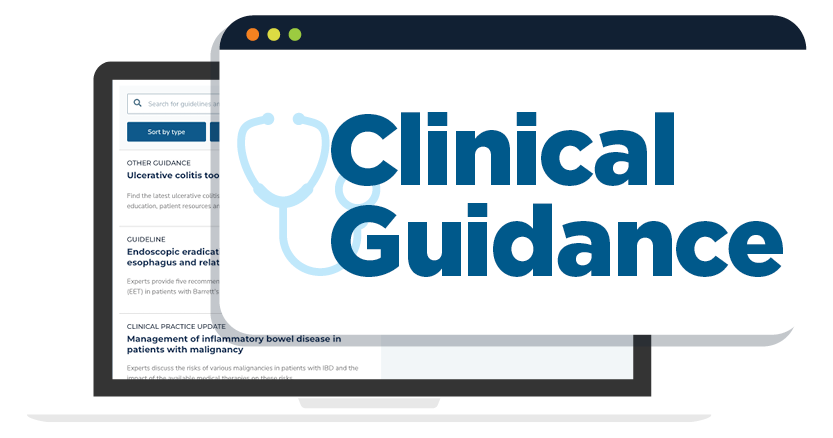- There are identifiable high-risk groups in the U.S. who should be considered for gastric cancer screening. These include first-generation immigrants from high-incidence gastric cancer regions and possibly other non-White racial and ethnic groups, those with a family history of gastric cancer in a first-degree relative, and individuals with certain hereditary GI polyposis or hereditary cancer syndromes.
- Endoscopy is the best test for screening or surveillance in individuals at increased risk for gastric cancer. Endoscopy enables direct visualization to endoscopically stage the mucosa and identify areas concerning for neoplasia, as well as enables biopsies for further histologic examination and mucosal staging. Both endoscopic and histologic staging are key for risk stratification and determining whether ongoing surveillance is indicated and at what interval.
- High-quality upper endoscopy for the detection of premalignant and malignant gastric lesions should include the use of a high-definition white-light endoscopy system with image enhancement, gastric mucosal cleansing, and insufflation to achieve optimal mucosal visualization, in addition to adequate visual inspection time, photodocumentation, and use of a systematic biopsy protocol for mucosal staging when appropriate.
- H. pylori eradication is essential and serves as an adjunct to endoscopic screening and surveillance for primary and secondary prevention of gastric. Opportunistic screening for H. pylori infection should be considered in individuals deemed to be at increased risk for gastric cancer (refer to Best Practice Advice 1). Screening for H. pylori infection in adult household members of individuals who test positive for H. pylori (so-called “familial-based testing”) should also be considered.
- In individuals with suspected gastric atrophy with or without intestinal metaplasia, gastric biopsies should be obtained according to a systematic protocol (e.g., updated Sydney System) to enable histologic confirmation and staging. A minimum of 5 total biopsies should be obtained, with samples from the antrum/incisura and corpus placed in separately labeled jars (e.g., jar 1, “antrum/incisura” and jar 2, “corpus”). Any suspicious areas should be described and biopsied separately.
- GIM and dysplasia are endoscopically detectable. However, these findings often go undiagnosed when endoscopists are unfamiliar with the characteristic visual features; accordingly, there is an unmet need for improved training, especially in the U.S. Artificial intelligence tools appear promising for the detection of early gastric neoplasia in the adequately visualized stomach, but data are too preliminary to recommend routine use.
- Endoscopists should work with their local pathologists to achieve consensus for consistent documentation of histologic risk-stratification parameters when atrophic gastritis with or without metaplasia is diagnosed. At a minimum, the presence or absence of H. pylori infection, severity of atrophy and/or metaplasia, and histologic subtyping of GIM, if applicable, should be documented to inform clinical decision making.
- If the index screening endoscopy performed in an individual at increased risk for gastric cancer (refer to Best Practice Advice 1) does not identify atrophy, GIM, or neoplasia, then the decision to continue screening should be based on that individual’s risk factors and preferences. If the individual has a family history of gastric cancer or multiple risk factors for gastric cancer, then ongoing screening should be considered. The optimal screening intervals in such scenarios are not well defined.
- Endoscopists should ensure that all individuals with confirmed gastric atrophy with or without GIM undergo risk stratification. Individuals with severe atrophic gastritis and/or multifocal or incomplete GIM are likely to benefit from endoscopic surveillance, particularly if they have other risk factors for gastric cancer (e.g., family history). Endoscopic surveillance should be considered every 3 years; however, intervals are not well defined and shorter intervals may be advisable in those with multiple risk factors, such as severe GIM that is anatomically extensive.
- Indefinite and low-grade dysplasia can be difficult to reproducibly identify by endoscopy and accurately diagnose on histopathology. Accordingly, all dysplasia should be confirmed by an experienced gastrointestinal pathologist, and clinicians should refer patients with visible or nonvisible dysplasia to an endoscopist or center with expertise in the diagnosis and management of gastric neoplasia. Individuals with indefinite or low-grade dysplasia who are infected with H. pylori should be treated and have eradication confirmed, followed by repeat endoscopy and biopsies by an experienced endoscopist, as visual and histologic discernment may improve once inflammation subsides.
- Individuals with suspected high-grade dysplasia or early gastric cancer should undergo endoscopic submucosal dissection with the goal of en bloc, R0 resection to enable accurate pathologic staging with curative intent. Eradication of active H. pylori infection is essential but should not delay endoscopic intervention. Endoscopic submucosal dissection should be performed at a center with endoscopic and pathologic expertise.
- Individuals with a history of successfully resected gastric dysplasia or cancer require ongoing endoscopic surveillance. Suggested surveillance intervals exist, but additional data are required to refine surveillance recommendations, particularly in the U.S.
- Type I gastric carcinoids in individuals with atrophic gastritis are typically indolent, especially if <1 cm. Endoscopists may consider resecting gastric carcinoids <1 cm and should endoscopically resect lesions measuring 1–2 cm. Individuals with type I gastric carcinoids >2 cm should undergo cross-sectional imaging and be referred for surgical resection, given the risk of metastasis. Individuals with type I gastric carcinoids should undergo surveillance, but the intervals are not well defined.
- In general, only individuals who are fit for endoscopic or potentially surgical treatment should be screened for gastric cancer and continued surveillance of premalignant gastric conditions. If a person is no longer fit for endoscopic or surgical treatment, then screening and surveillance should be stopped.
- To achieve health equity, a personalized approach should be taken to assess an individual’s risk for gastric cancer to determine whether screening and surveillance should be pursued. In conjunction, modifiable risk factors for gastric cancer should be distinctly addressed, as most of these risk factors disproportionately impact people at high risk for gastric cancer and represent health care disparities.
My AGA
AGA Journals
AGA University
AGA Research Foundation
AGA Job Board
My AGA

My AGA
Make the most of your AGA membership. Access your AGA profile, event registrations, member directory and more.
AGA Journals
AGA Journals
AGA’s peer-reviewed journals offer high-quality research on current advances in GI and hepatology: Gastroenterology, CGH, CMGH, TIGE and Gastro Hep Advances.
AGA University
AGA University
AGA University is your home for in-person meetings, webinars and other educational tools designed to help you stay current with advances in the GI field and earn MOC/CME.
AGA Research Foundation

AGA Research Foundation
The AGA Research Foundation funds young investigators who are committed to advancing gastroenterology. Through research, we can identify new treatment options for digestive disease patients.
AGA Job Board
AGA Job Board
AGA’s official job board, GICareerSearch.com, features new job postings daily. Employers can also post open positions.
MENUMENU
- Clinical Guidance
-
-

Clinical Guidance
Our clinical guidelines and updates help you make the best evidence-based decisions for your patients.
-
-
- Journals & Publications
-
-

Male doctor reading medical record while sitting at desk. Confident healthcare worker is working in his office. He is wearing lab coat in clinic. Journals & Publications
Latest research and ideas from the GI field.
-
- GastroenterologyThe premier journal in GI.
- Clinical Gastroenterology and Hepatology (CGH)The go-to resource in clinical GI.
- Cellular and Molecular Gastroenterology and Hepatology (CMGH)Impactful digestive biology research.
- Techniques and Innovations in Gastrointestinal Endoscopy (TIGE)Cutting-edge advances in GI endoscopy.
-
-
- Meetings & Learning
-
-

Speaker giving a talk in conference hall at business event. Audience at the conference hall. Business and Entrepreneurship concept. Meetings & Learning
Earn CME, MOC and improve your skills.
-
-
- News
- Membership
-
-

High angle shot of a team of doctors using a digital tablet together Membership
More than 16,000 professionals worldwide call AGA their professional home.
-
-
MENUMENU
- DDW
- Practice Resources
-
-

a medical salesman or administrator is sitting with a female doctor and running through a presentation . He is explaining something and referring to the computer screen in front of them on the desk. Practice Resources
Tools to maximize efficiency and help you deliver high-quality care.
-
- Practice ToolsCutting-edge resources to improve your patient care.
- New Technology & TechniquesThe latest innovations in GI.
- Quality & Performance MeasuresSupport to meet reporting requirements.
- ReimbursementTools to understand policies and advocate for reimbursement.
- GI Patient CenterBy specialists, for patients.
-
-
- Research & Awards
-
-

Shot of a female scientist in a laboratory working with a microscope. Research & Awards
Funding opportunities and other initiatives advancing discovery.
-
-
-
-
- Fellows & Early Career
-
-

Shot of a diverse team of doctors having a discussion Fellows & Early Career
Resources designed for early career gastroenterologists.
-
-



